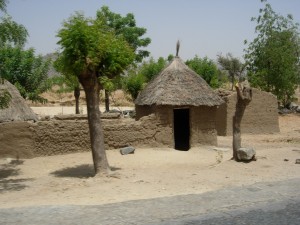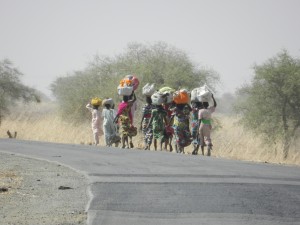 It would be both trite and stylistically derivative in the extreme to remark how airplanes have altered the landscape of travel, how the gradations of gradual orientation long ago dissipated into the ether of contrails. Travel is disorienting enough without, as but one random example, waking up in a snowstorm and sub-zero temperatures in the Colorado High Country and bedding down while swatting malaria-carrying mosquitoes in the lowlands of Brazil. But in a travel world defined by trips rather than journeys, by vacations rather than expeditions, by long weekends rather than pilgrimages, it has almost become passé to ponder the implications and ramifications of bypassing transitional waylays while sipping $6 beers at 36,000 feet.
It would be both trite and stylistically derivative in the extreme to remark how airplanes have altered the landscape of travel, how the gradations of gradual orientation long ago dissipated into the ether of contrails. Travel is disorienting enough without, as but one random example, waking up in a snowstorm and sub-zero temperatures in the Colorado High Country and bedding down while swatting malaria-carrying mosquitoes in the lowlands of Brazil. But in a travel world defined by trips rather than journeys, by vacations rather than expeditions, by long weekends rather than pilgrimages, it has almost become passé to ponder the implications and ramifications of bypassing transitional waylays while sipping $6 beers at 36,000 feet.
Still, it might have value to mull for a moment that which we pass over at least as much as we contemplate origins and destinations and the oppositional connections between the two. I have spent enough time with my nose buried in atlases of the world that I pretty much have the planet memorized. Even before the beverage tray had arrived at our side, I knew our flight from Brussels to Douala, Cameroon, would take us over the Alps, over the Mediterranean, over the Sahara and finally into the heart of the Congo Basin.
Peering out the small window, I mentally laid out a surface map of Planet Earth, and, try though I might, I could not recreate a reasonable aerial route that passed over such historically important and geographically superlative terrain. The Alps are one of the most noteworthy mountain ranges in the world, especially if you overlay history with topography. The Mediterranean forms the saltwater soul of that which we now, for better or worse, call Western Civilization. The Sahara is the only desert whose name is synonymous with aridity so expansive it cannot be fully fathomed. And the Congo Basin stirs the heart of darkness in a way that no other tropical rainforest — not even the Amazon — does.
It took six-and-a-half hours to fly from the lowland civility of Belgium across the snow-covered summits of the Alps, across Mediterranean waters so deep blue I had to open and lay out my mental Thesaurus next to my mental world atlas in hopes of finding appropriate descriptive alternatives — azure? cobalt? sapphire? indigo? — across Saharan scenes of splendid desolation so severe and extensive that it made my lips shrivel and my tongue swell and parch, until, finally, across and into the living green monster, where dwell gorillas and pygmies.
At the time, I was unable to find upon my mental atlas another reasonable six-and-a-half-hour flight route that could match that stratospheric traverse. You might be able to go from the Gobi across the Himalayas to the Mouths of the Ganges, but what airports would you connect? You might be able to leave the Amazon Basin to fly across the Andes. But, again, where would you be coming from and where would you be going? Maybe from Anchorage across the vast Pacific to Hawaii. Maybe from Melbourne to Port Moresby. Maybe those routes, those origins and destinations would come close to equaling a single-leap half-day flight over the Alps, over the Mediterranean, over the Sahara, over and into the Congo Basin. Maybe. And maybe there are others I am not thinking of. Maybe not.
What is not maybe is: This morning I was sipping coffee in the cultured heart of northern Europe. Tomorrow, I will be searching for lions in the rich bleakness of the sub-Saharan Sahel among colorfully attired tribesmen carrying water buckets atop their heads five miles through the heat to their mud huts.
There are times when I lament what airplanes have done to travel. This is not one of those times.

